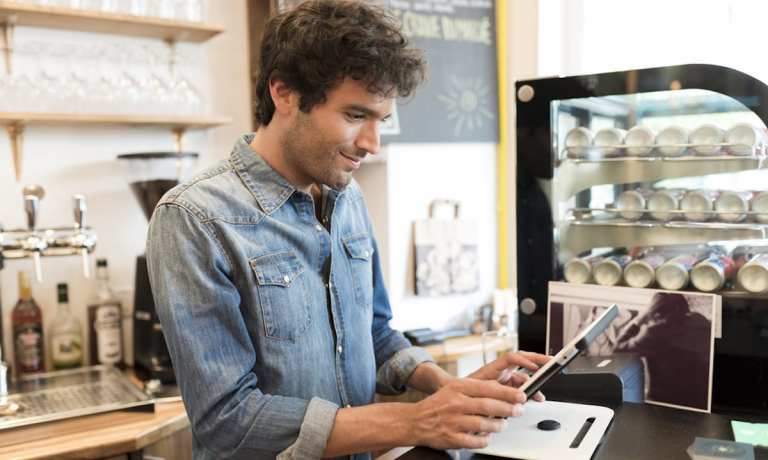
After filing an S-1 with the Securities and Exchange Commission (SEC) last month, software-as-a-service (SaaS) company Olo, which creates digital ordering and delivery solutions for restaurants, announced the launch of its roadshow for an initial public offering (IPO) on Monday (March 8). The announcement stated that the 18 million shares of the company’s Class A common stock would be valued in the range of $16-$18 per share.
The company’s software enables ordering across a wide range of digital channels, delivery programs that manage orders and can integrate with third-party services, and platforms for managing restaurants’ online presences, among other solutions.
Now, after over a year of IPO rumors, the company is finally going public, amid a dramatically changed (and still changing) industry. As investors take stock of Olo’s present and future, here are five takeaways from the S-1 filing:
Anticipation Of Losses
Despite the company’s rapid growth in the last year, Olo predicts that it will see significant losses in the near future.
“We have a history of losses and we may be unable to sustain profitability,” the company stated as one of the risk factors affecting its financial prospects, going on to specify that in 2018 and 2019, the company generated net losses of $11.6 million and $8.3 million, respectively. Though in 2020, Olo saw a net income of $3.1 million, the filing stated that “we anticipate that we will continue to incur losses in the near term as we increase our operating expenses.”
These losses will come from spending on marketing, R&D “to introduce new modules and enhance existing modules,” customer service, and strengthening and adapting the network’s infrastructure, among other expenses.
Navigating The Disorder Of ResTech
In describing the “key complexities that hinder restaurants’ digital transformation progress,” which can serve as both challenges and opportunities for a solution provider like Olo, the company pointed out that many restaurants’ systems are built on an outdated tangle of technologies.
“Restaurant brands historically have not standardized the type of technology platforms that must be deployed across their locations,” the filing states. “For example, in our survey, 70 percent of respondents indicated they use two to four different technology providers to collect orders across various channels.”
Many restaurants use multiple platforms even within one location, and much of this technology is difficult to integrate with more up-to-date software. The filing added that “legacy restaurant systems were not built for modern, cloud-based environments … furthermore, brands are unable to access their consumer data, as it resides in different systems and databases that cannot communicate with each other.”
The Growth Of Digital Ordering
As a provider of digital ordering software, and accordingly the recipient of a wide range of restaurants’ digital ordering data, Olo is uniquely positioned to make informed predictions about the future of the channel. In the filing, the company predicted that “we expect consumers will continue to demand digital solutions from restaurants that offer more convenience and personalization, helping to drive sales and expand the industry.”
The company noted the growth of orders placed through third-party aggregators as well as through restaurants’ own platforms, pointing out the widespread adoption of contextual strategies to drive digital orders: “Major consumer-facing platforms are embedding food ordering into products such as maps and search results, making it even more convenient for consumers.”
Additionally, Olo added that digital ordering channels “are expected to drive the expansion of the U.S. online food delivery market, a subset of the restaurant digital ordering market, from $356 billion in 2019 to $470 billion by 2025, according to industry research.”
Restaurants’ Increasing Need For More Direct Channels
Though digital ordering is growing through both direct and indirect channels, Olo’s customers are clearly prioritizing the former. As restaurants and aggregators continue their tug-of-war for the share of consumer spending, given the razor-thin margins of restaurant delivery, restaurants are looking to reclaim their relationships with customers.
“Over 70 percent of Olo customers in a recent survey indicated that their primary reason to own their own branded digital storefront was to own a direct relationship with their guests,” the filing noted. “The majority of respondents have 50 percent or less of their online orders coming through an aggregator compared to their own channel, and they expect their mix of aggregator order volumes to decrease in the future relative to their own channel.”
The filing noted that from both restaurants’ and consumers’ points of view, own-restaurant ordering channels are preferable, with the former preferring to have full access to customer data and the latter seeking a more direct interaction with the brand. As Olo pointed out, “according to a recent survey by the National Restaurant Association, 64 percent of adults prefer to order directly through the restaurant for delivery, compared to only 18 percent who prefer to order through a third-party service for delivery.”
Olo’s Post-Pandemic Future
As the pandemic severely limited indoor dining opportunities and created an increased desire for low-contact dining options, restaurants sought to expand their off-premise capabilities. Accordingly, Olo’s revenue rose sharply in 2020. Per the filing, the year-over-year increase was 55.2 percent in Q1, 100.2 percent in Q2, 94.2 percent in Q3 and 117.6 percent in Q4. This was largely due to the company’s reprioritization “to address the most important solutions for our customers, including enhancements to our curbside pick-up functionality.” New features also included building in QR codes and offering “kiosk ordering solutions.”
Clearly, this dramatic growth was born out of exceptional circumstances. While Olo predicts that its solutions will remain in high demand as restaurants continue to adapt their digital presence to an industry much changed by the pandemic, no one can say for sure what the restaurant industry will look like in the next few years. As the filing stated: “Although we are optimistic that the emphasis on on-demand commerce in the food services industry will be an enduring trend, we do not have certainty on the long-term impact these developments will have on the industry.”